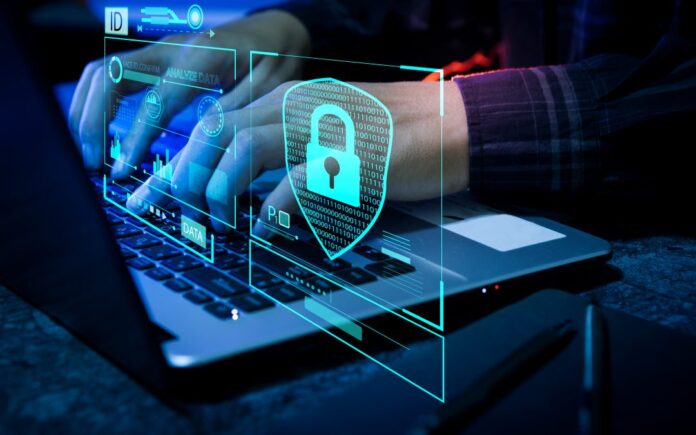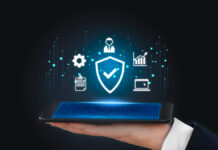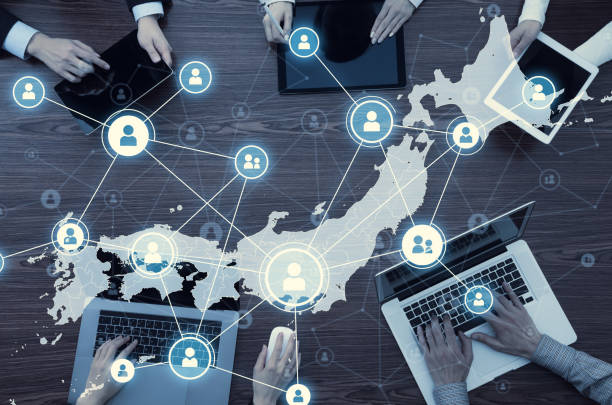There have been numerous changes in technological advancements over a decade. Innovations are at their peak. Where there are certain advancements and advantages regarding technology, risk factors are rising on the other hand as well. Yes! Cyber threats can be problematic in the present and upcoming areas of the digital age.
We often face scams and troubleshooting problems like viruses occur. In another sense, we often hear about hacking systems and getting control over the programs. The controlling of the systems and things related comes rightly under the term cyber threats.
For instance, if we order Wholesale Blank T-Shirts online and didn’t receive the required order, it constitutes cyber threats. As we often receive shirts of low quality and not at wholesale pricing, or as the shirts may have some kind of print or artwork, it may be a scam or fraud.
The risk and threats might be for the software, devices, or the data that misleads somehow. New security risks become apparent in businesses as they implement new IT solutions along with technology. As cybercrime becomes more dominant there are more diverse, delicate, and advanced risks.
The most cutting-edge cybersecurity systems are continually being undone or surpassed by cyber threat actors, who conceive, develop, and update solutions regularly.
Companies now confront more serious cyber dangers than ever before as a result of the confluence of all these variables. Cyberattacks increased by 38% in 2022 compared to 2021. Attacks will become much more frequent as cyber threat actors hone their methods, and businesses will encounter new and riskier cyber threats.
What are Cyber Threats?
While certain cyber threats persist over time, many others fluctuate year after year. These represent a number of the most prominent dangers related to cybersecurity that companies need to get ready for in 2023.
As a result, cybersecurity has become a top priority to protect data from several online attacks and any unlawful access.
Because of continued technological improvement, there will be a similar change in cybersecurity issues as news about data breaches, ransomware, and accessing turns into standard practice. The leading security issues for 2023 are listed below.
If you are unaware of the cyber threats then this piece of writing is for you. As for the information purpose and knowledge upscaling read the following article till the end.
Increase in Automotive Hacking
Thanks to the autonomous software that is included in today’s cars, drivers may instantly access comforts like airbags, speed control, ignition controls, and modern driver assistance technologies. Due to their Bluetooth and wireless connectivity, these vehicles are susceptible to various security problems or hacking issues. Self-driving or autonomous automobiles feature an even more complicated process that demands severe cybersecurity precautions.
Artificial Intelligence (AI) Technology’s Potential
Threat detection systems with AI capabilities can predict upcoming assaults and immediately alert administrators to any data breach.
However, auto assurances, language comprehension, recognition of faces and autonomous threat detection have all benefited greatly from artificial intelligence.
The New Target is Mobile
People are at increased risk from our instant messaging, chatting, financial dealings, and imagery. In 2023, cybersecurity trends may focus on smartphone viruses or malware.
For instance, t-shirt bulk suppliers do not get the transaction by the customer in return for bulk supply and the customer though have already sent the amount. Meanwhile, the account faces external control and gets hacked.
Additionally Potentially Vulnerable is the Cloud
Cloud projects like those from Google and Microsoft still have strong security measures in place, it’s the user interface that often leads to mistakes, spyware, malware, and fraudulent messages.
Data Violation – Key Focus
Organizations all over the world are going to keep focusing on data. Protecting digital data is now the foremost goal, whether for a single individual or an organization. Any slightest defect or decline in your computer’s software or browser could allow hackers access to your sensitive data.
The New Era of Technology and Risks with the 5G Network and IoT
Likewise, they are susceptible to outside meddling, acts of violence, or invisible software vulnerabilities because of the close connection between various devices. Even Chrome, the most popular browser in the world and one that Google supports turns out to have significant problems. Due to the fact that 5G architecture continues to be a new product on the market, in-depth research is required to find flaws and improve the system’s defenses against outside threats.
Specific Ransomware
Specific ransomware is another significant cybersecurity development that we are unable to ignore.
Even while ransomware typically threatens to make the victim’s data public except a ransom is paid, it can also harm very large organizations or entire countries.
Internal Threats
One of the main causes of the data breach is still human mistakes. Millions of missing information can bring down an entire organization on any poor day or purposeful loophole. For instance, if there is data for the fabrics like 65 Polyester 35 Cotton t-shirts Wholesale, due to cyber interruptions it can be manipulated and mislead the information of numbers or the fabric.
Therefore, be sure to raise awareness about data security within the facility.
Remote Cybersecurity Work
Due to the frequently less safe networks and equipment they use, remote employees may be more susceptible to cyberattacks. To protect remote workers, organizations must implement proper security measures, which incorporate authentication with multiple factors, ensure VPNs, and continuous upgrading.
Social Engineering Threats
Attackers are increasingly employing social engineering strategies to get sensitive data, including spear phishing, phishing, and identity theft. Organizations must make sure that all of their staff members undergo the necessary training to identify suspicious behavior, report it, and put protective measures in place.
Multiple Factor Verification:
Users must submit multiple forms of verification before they may access an account as a security measure. As attackers need access to numerous pieces of details to obtain access, this extra layer of protection helps to defend against cyberattacks. To lessen the danger of unusual access, organizations should make arrangements to ensure every single account is secured using MFA.
Organizations providing Plain T-shirts wholesale, Must have a specific online presence, including a website, data, and product displays that are vulnerable to inappropriate modifications to T-shirt pricing, quality, and other website ranking factors. Multiple verifications could therefore play a big part in keeping the website’s content safe in that situation.
Improved IoT Device Security:
Devices connected to the Internet of Things (IoT) are getting more and more popular, and this trend is projected to continue.
Hence, businesses need to maintain the privacy of their Internet of Things (IoT) devices as well as the integrity of their data and apps.
Enhanced Cloud Security:
Cloud security solutions are created to safeguard data stored in the cloud from illegal access in addition to safeguarding it from information theft and other cyber threats as more businesses move their applications and information to the cloud.
Conclusion:
Lastly, it’s critical to be literate and adhere to recommended practices like using strong passwords, routinely upgrading software, using multi-factor authentication, and shaping yourself and your organization about new cyber threats to combat these cybersecurity concerns. Encryption, detection of attacks, and other strong cybersecurity measures can also help improve overall security.
FAQs:
Do strong passwords work as a brick against hackers?
Definitely, yes. Use secure, one-of-a-kind passwords for all of your devices and accounts. Besides, use a mix of lowercase and uppercase letters, numerals, and special characters. Do not include words or facts that can be likely known, such as birth dates or nicknames.
In what ways can I protect my personal information online?
Start by creating strong, unique passwords for your accounts, enabling multi-factor authentication whenever possible, and being careful what information you share online. Monitor and adjust your privacy settings regularly on social media platforms. Send sensitive information over secure, encrypted channels.
What effects can cyber threats result in?
Malware and denial-of-service attacks are two examples of threats to cybersecurity that may lead to device failure or become unusable. Overall, cybersecurity attacks can have serious impacts on finances, including financial losses. Therefore, cyber-attacks have the potential to cause serious operational disruptions, monetary losses, and no way to recover crucial data.
How to protect against phishing?
Be mindful of any links or emails that seem unusual. Prevent tapping on unknown attachments and inputting personal information until you are sure about the reliability of the source.
Is antivirus software liable to control the misbehaving of the device?
Install effective anti-malware and antivirus software on your devices. Regularly refresh and examine the systems to find and remove hazardous applications.
















